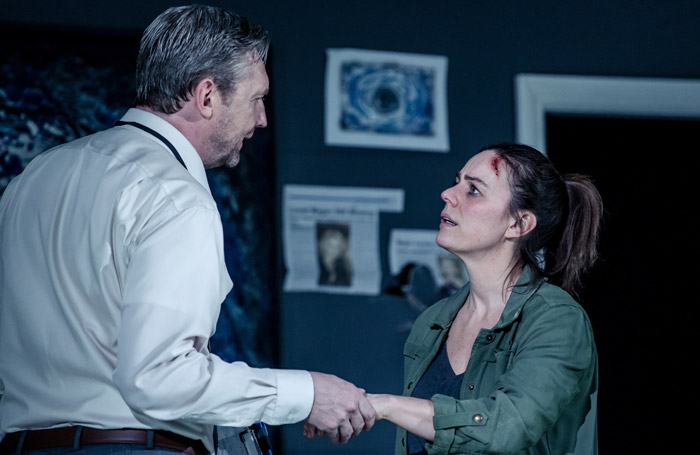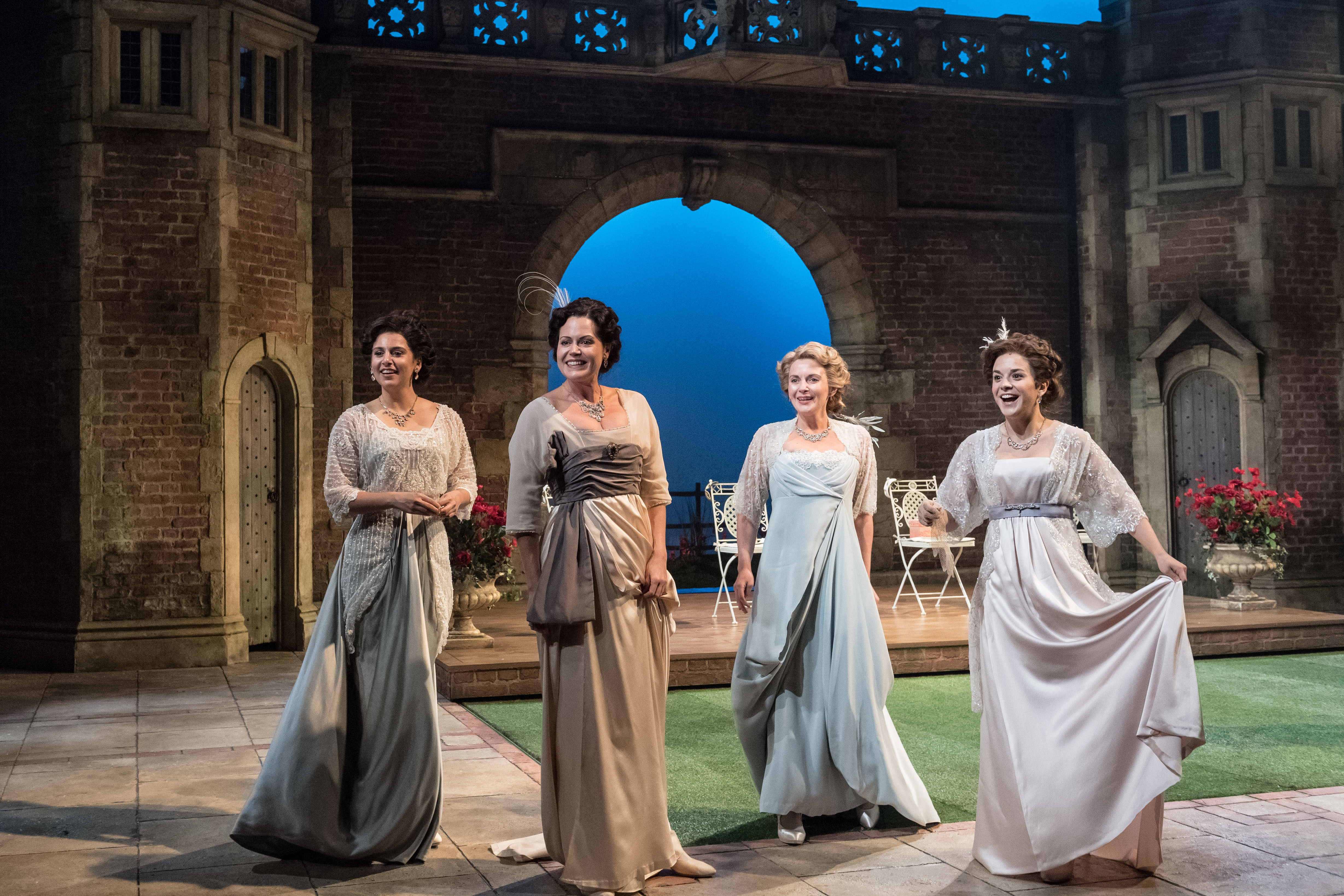Don’t you just hate it when you’ve spent hours of your life reading a whodunnit only to find that the author solves the crime by bringing on a total stranger at the end? Or the story is so convoluted – I’m thinking The Snowman here – it’s impossible to work out what’s going on, and it leaves you thinking WTF?
I’m delighted to say this is not a problem with The Girl On The Train. Whatever its faults, and there are a few, the plot isn’t one of them. It’s gripping, and surprising, and it works. That’s true of Paula Hawkins‘ multi-million-selling novel and the stage adaptation. I haven’t seen the film, and I’m told that’s a mercy, but there are always sacrifices when stories move from one medium to another. And, one hopes, gains, otherwise why do it at all? You’ll notice that I’m eschewing the mere generation of cash as a motive for transferring an extremely popular book to film and stage. Who would think of such a thing?
Among the sacrifices made in transferring this book to the stage is the conflation of timescale. Relationships given time to develop in the book, such as the one between our heroine and the therapist, are completed in two scenes. In the case of the therapist, this leaves him behaving totally unprofessionally to the point where he becomes unbelievable. It was a bit of a problem in the book, but here it’s a real hurdle. 
We also lose the narrator’s voice. It’s important in the book because she is that very modern thing – unreliable. The reader can’t necessarily believe what they’re reading. On stage this uncertainty arises when we‘re told she has problems with her memory, and the detective goes on about how unreliable she is. Nevertheless he seems to tell her quite a lot, and sometimes she’s present for conversations between other people she couldn’t possibly have heard.
But the real problem is the design. The play is set in what could be a shoe box with one side cut away, through which we watch the action. I’ve seen this design before, in People Places Things where it was a triumph, in The Master Builder at the Playhouse where it worked for everything except the ending, and now here, where it only works for the technical whizz of some lighting effects.
You know there’s going to be a problem right at the start when our protagonist, discovered passed out on her living room floor with a couple of empty burger boxes and a beer bottle, is woken by a knock at the door and lets in the policeman who says “what a terrible mess”. There is no terrible mess. In my house two burger boxes and an empty beer bottle pass for ornaments.
 There is no terrible mess because the room is the same room whether it’s our central character’s flat, her ex-husband’s house, the missing woman’s flat, the therapist’s office or his home. And every single one of these rooms has the same painting in it. A painting done by the missing woman that looks like the black pupil of a large eye with a swirling silver eddy around it. It’s probably a visual metaphor for the emptiness in the missing woman’s soul, but why has everybody got a copy?
There is no terrible mess because the room is the same room whether it’s our central character’s flat, her ex-husband’s house, the missing woman’s flat, the therapist’s office or his home. And every single one of these rooms has the same painting in it. A painting done by the missing woman that looks like the black pupil of a large eye with a swirling silver eddy around it. It’s probably a visual metaphor for the emptiness in the missing woman’s soul, but why has everybody got a copy?
Nevertheless, the audience really liked the play. It didn’t get a stander, which first nights at the West Yorkshire Playhouse often do, but there were a couple of generous rounds of applause and the buzz as people were leaving would be music to the producers’ ears. And it’s selling well, with a tour in view. I often quote P.T. Barnum’s dictum that “nobody ever went broke by underestimating public taste”, and there are plenty of examples of that about. But this isn’t one of them. There’s a great thriller lurking in here somewhere and, if the producers want to, I’m sure they’ll find it. If not, they can always console themselves by counting their money.
Photos by Richard Davenport
The Girl on the Train is at West Yorkshire Playhouse until June 9, 2018. For more details, click here.
To read Northern Soul’s interview with Paula Hawkins, click here.












